Something about polyurethane stucco: the emergence, materials and forms, installation of decorative parts, collections presented in the Russian market.
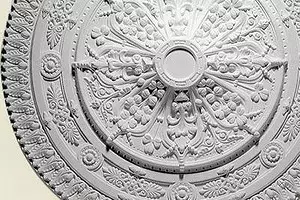
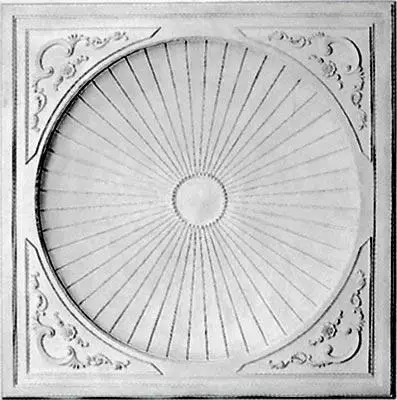
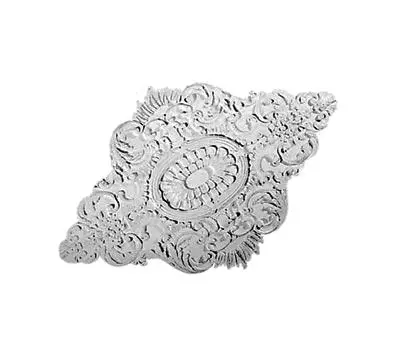
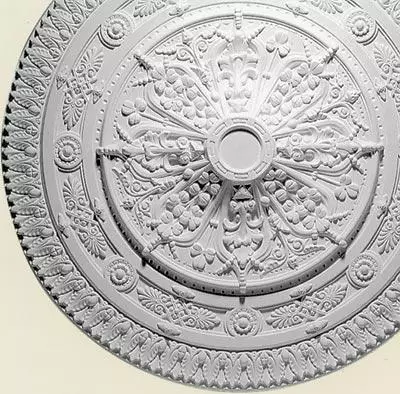
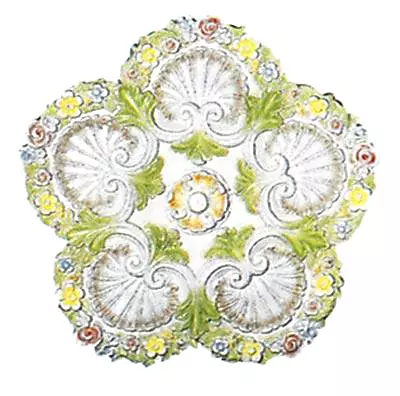
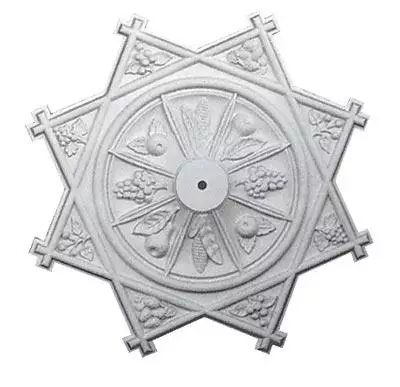
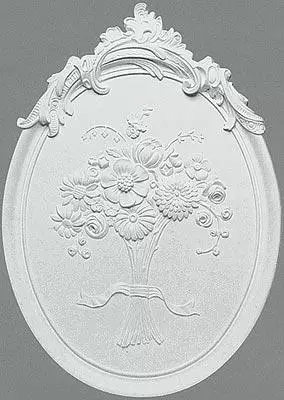
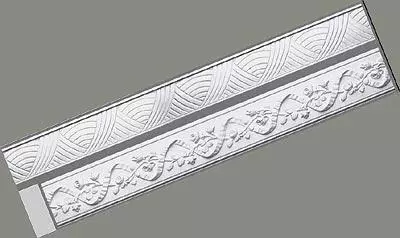
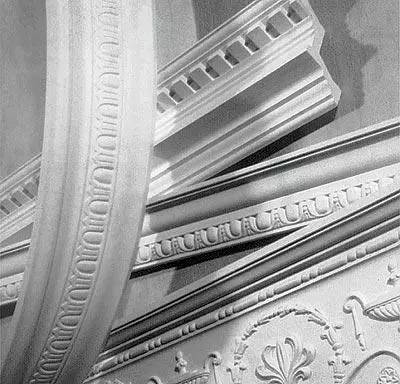
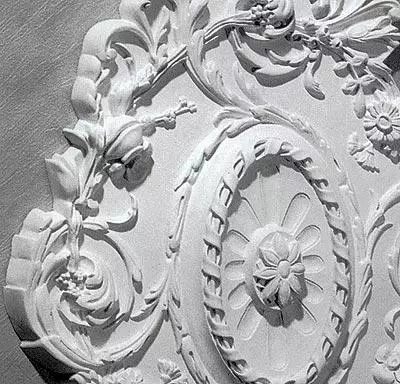
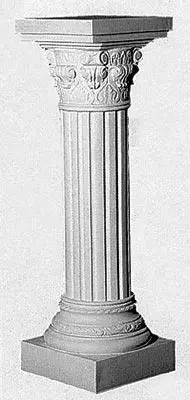
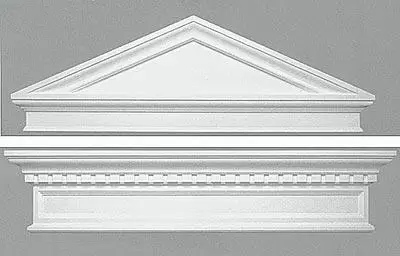
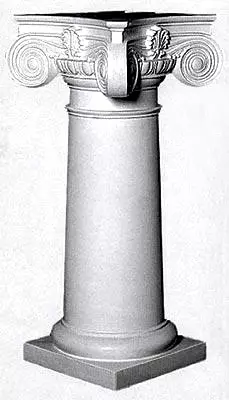
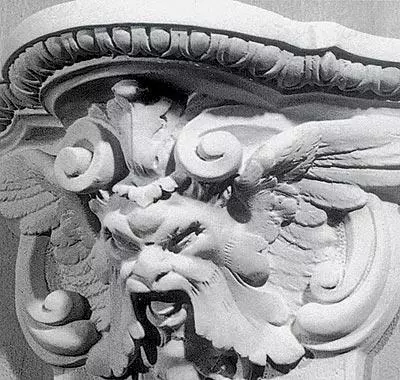
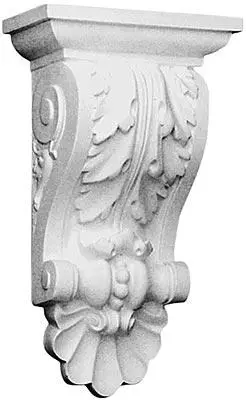
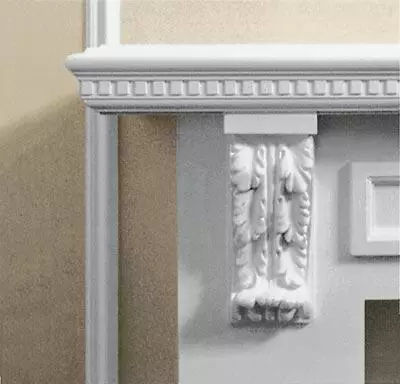
Along with the stone carving, the stucco, which will be discussed, was already known in the earlier, Aegean (Crito-Mixed) period of ancient Greek art (II millennium BC). She sustained the tests of the centuries and today received a new development based on modern technologies.
The stucco decor helps the designer to emphasize the architectonics of the interior, to establish the harmony of perception of the entire residential space. Using an overhead embossed baguette (the so-called moldings), the designer can split monotonously smooth planes of walls into separate areas, establishing such proportions between them, the combination of which leads to classical clarity. Application simultaneously with the stucco columns of various styles and proportions, pedestals, consoles, niches and domes gives a decorator of modern interiors an excellent opportunity to remind the magnificent history of classicism, revolve into the architectural space eclipsed by peace of emergency mansions and the poetry of Russian estates ...
History - ancient and not very
Architectural decorations, embossed ornamental decor have a very long history. The fantasy of ancient sculptors and architects did not know the borders. Even in Greece and Rome, ornaments, borders, eaves and other stucco decorations, composed of stylized, repetitive plant forms - leaves and garlands from Lavra, Eucalyptus, Akanfa, palm trees, grape vines ... Juicy lace leaves of southern plants and powerful buds Flowers carved in marble or cast in plaster, giving picturesque light, the spectacular modeling of their volumes produced a strong impression.By the way, strict and intense geometric ornaments were preceded by "plant" stucco: they emphasized the harmony and clarity of logical architectural forms, enhanced interior impressions.
In general, strict, geometric stucco was led to the greater representativeness of the Hellenistic apartments, and the figurative direction put itself a task to complicate the figurative, emotional life of the interior. The ancient cities of the Eastern Mediterranean are in the ambiguity and pomp of the stucco decor: it was filled with elegantly and tightly harsh small details that imitate herbal forms of the abundant nature of subtropics - twisted stems, leaves, flowers, shoots. Known ornaments from stylized sea waves, shells, fish, dolphins, border reliefs, friezes in the form of garlands, cornucopia, medallions, cones, boutons. Each of them carried its symbolism: let's say fruits and flowers spoke about fertility; Leaves of palm trees and laurels were symbols of glory; Owl and Snake personified wisdom, etc.
The impulse, given by the decorative ornament of antiquity, penetrated the entire history of architectural embossed decorations in all further options - classicism, Renaissance, Baroque, Rococo, Ampir, - Always giving interior equilibrium, elegacity, harmony. And only Modern has fundamentally changed the stylistics of the stucco, making an elegant and capricious dynamics, extravagant asymmetry.
Materials for casting stucco
The technological principle of creating stucco decorations is as follows. From the original ornament (which can be carved from marble, stone, wood, molded from clay, wax, plasticine) remove the shape (cast), which is like a "negative" three-dimensional image of the original. From this form and cast the desired number of repetitions that exactly reproduce the original. To obtain high-quality castings, a number of materials are used that can proceed from a liquid state into solid without cracking and a large shrinkage. First of all, it is an old good acquaintance and well-mastered plaster, as well as papier-mache, plaster, cement, less often - metal.
New time presented to manufacturers of stucco, architects, designers new materials. This is: fiberglass, glass accommodation, polystyrene and most importantly - foamed polyurethane (polyurethane foam). The stucco from modern materials is offered by Orac Decor (Belgium), Balledecor (Malaysia), Fypon (USA), NMC (Belgium), Gaudi Decor (Malaysia), the domestic manufacturer - "Europlast".
The smooth ceiling profile (eaves) from polystyrene began to be produced in Belgium in the 1950s, using the extrusion technology - extruding from a hot crucible through the profile opening of a rapidly frozen mass. Polyurethane (polyurethane foam) is the most efficient and popular now material for stucco, was invented in the 30s of the 20th century in Russia. For the production of stucco, it began to be used in Europe at the end of the 60s.
Polyurethane foam produced by mixing the chemical components, which, connecting, give a reaction with the release of gas (foaming). Polyurethane stucco is pressed in forms. Completed from cheap raw materials, convenient in transportation, storage, processing, easy-to-manufacture in large quantities and assortment, beautiful, aesthetic, and purity of relief pattern, durable, - she quickly won the market, hitting the professional imagination of the creators of interiors.
On the texture and density of polyurethane, although it matches the tree, but over time it does not crack, it does not deform, does not distinguish the smell, environmentally clean. Foamed polyurethane is solid and durable. Compared to the plaster, the polyurethane is easier, does not shine over time, it does not appear. The stucco from it is covered with a special primer layer, which allows you to paint the elements of decor by any water soluble, as well as oil paints (the exception is nitroquras and nitroleki), and these decorations can be washed without any damage. High-tech production allows you to achieve a clear relief and accurate sizes, which eliminates the technological fitting of parts during the installation process and ensures the relief clarity even after multiple staining. The installation of polyurethane foam products is characterized by speed, cleanliness and ease, especially in comparison with the installation of similar products from plaster, wood and concrete.
Pepling from polystyrene (the most cheap) It is advisable to decorate the tops of the walls and the ceiling. Soft (compared to polyurethane and plaster) polystyrene can be "injured" the back of the chair, the hard edge of the furniture.
Molds for casting stucco
The quality of the casting depends on the quality of the form. Until some, the forms were made, as a rule, from clay and gypsum. In modern production, two most effective options were entrenched.Metal forms of alloy steel (Of these forms of cast, for example, the collection of the company ORAC Decor), as well as from aluminum used by another Belgian company NMC. Metal forms are very complex in the manufacture, but, of course, justify themselves, excluding any inaccuracy of geometric sizes, when the stucco is varied with very large circulations, and forms use many years. However, the final products produced in this way are relatively expensive.
Silicone forms . They are more common. Although silicone is less durable, it is still more reliable and easier in work than plaster, more precisely and thinner reproduces the original reliefs. The stucco, released from silicone forms, is quite good in quality, below for the price. Such a stucco produces Malaysian Balledecor.
Fastening stucco
Unlike the complex installation of plaster and wooden decor, the polyurethane stucco is simply glued. Firms "Europlast", Gaudi Decor Collection use "Liquid nails" and polyurethane glue. The company ORAC Decor recommends that own adhesives - ORAC Fix Standart Plus and Orac Fix Extra. In particular, the ORAC Fix EXTRA glue is high-strength, used to connect cornices , Moldings and plinths among themselves, and ORAC Fix Standart Plus - glue for attaching eaves, moldings and plinths to walls and ceiling. It can also be used to fill the slots.
Each manufacturer accompanies its products with instructions with the rules and methods of its application. Often they offer their special tool kits (stusla, saws, rules, spatulas, glue). General Recommendation for all stucco from polyurethane - Before sticking, all parts need to withstand within a few days in the same temperature and humidity conditions in which they will be operated.
Styles and collections
Production Stylistics companies Gaudi Decor and Balledecor tuples to ornamental, in oriental magnificent and whimperigious.Belgian firms, as well as our EuroPlast company more cultivate in its assortment variations of pan-European classicism. The Belgian company NMC recommends logically strict, rational way to achieve the stylistic unity of the stucco and all interior items: the decoration method is selection of suitable profiles and ornaments to the furniture reaches selected Client. Designers of the company offer a special table of stylistic correspondences, with which you can define each model of stucco (having your number) by its ratio to the so-called "French, German and Anglo-Saxon style" of the furniture. The range of stucco, consisting of four collections (Nomastil , Arstil, Focal Point, Domostil), contains an architectural decor in styles: classic, Renaissance, Baroque, classicism, Louis XIII, Louis XV, Louis XVI, Regency Style, Victorian Style, Tudor, Colonial Style, ARTDEKO (modern, Yugdestil) and Dr.
The collection of the relief architectural decoration of the ORAC Decor, which is replete with a variety of options, is composed of stucco decorations reproduced with classical historical samples, whose aesthetic value is tested by time. The modern part of the collection is stylistically perfectly combined with all the objects of the modern interior of glass, nickel, chromium, skin, wood, ceramics and plastics. Surrounded by such a stucco, the old library will be able to harmoniously, and today's engravings, and bronze ethnic sculpture. However, not only those who strictly adhere to the style of the style are resorted to stucco decorations. In the postmodern "radical eclecticism", which still dominates and gambling, to sharp and expressive combinations of distinct interior items, the free taste of the designer is guessing unpredictable wonders ...
Here, for example, stucco in the style of Rococo: It can piquant to emphasize the comfortable asceticism of constructivist furniture, and the baroque consoles of the library unexpectedly "will enjoy" with a bright stain of a plump avant-garde sofa. Using eaves and moldings, it is possible to stylistically combine the entire interior with one or two repetitive stucco ornaments passing along the walls, ceiling, furniture, frames, doors. The architecture will take on the larger on the scale of the decoration, and the doors and furniture are the same reliefs, but on a reduced scale.
Color comes to help when you need to avoid monotony. The stucco of the same profile can remain white - on the walls, bronze - on the doors and tinted under the tree - on the furniture. Options are infinite.
Assortment of collections
Eaves, plinth, moldings (border for walls). They produce all known firms: "Evraplast", Orac Decor, NMC, Balledecor, Gaudi Decor. They offer eaves not only to decorate connections between the wall and the ceiling, but also such that closes the locations of the curtain mounting, as well as eaves for hidden lighting. Such eaves attached to the wall under the ceiling do not reach it by 15 cm. Ribbon lighting devices are located inside the cornice - 14 ammunition for halogen lamps are mounted on a wire with a length of 2 m (10 W, 12 V). From overheating, the eaves are protected from the inside of the foil layer.
Eaves for hidden lighting create the effect of "steaming" ceiling, visually raise it. There are very convenient flexible models of eaves and moldings in the installation - to decorate round, curved walls.
Moldings decorate the walls, furniture, frames for mirrors, doors, as well as walls. The Nomastil collection (NMC) consists of decorative profiles from dense polystyrene, molded outlets from foamed polystyrene and angular elements. Polyurethane profiles and sockets use professional designers and decorators.
Wall decor. These are medallions - smooth, in vignettes, cartouches, or with floral decor inside. Garlands (or "Festos"), imitating laurels antique, tapes passable, are attached under the eaves, in the top of the walls.
Arch fraction. It is made up of standard sections, combining which can be spectacular and elegantly arrange space inside the niche, doorway, as well as bookshelves, bar, etc.
Framing of doorways. We are talking about platbands for doors (single and bivalve) and windows of various sizes, both in the interior and outside buildings. The completion of the design of the doors will give an angular decorative elements. The doors are filled with moldings in the same style. From above, on a platband, a figured frontoth can be attached, in the center of which is sometimes placed by a medallion that resembles a cokard, or any other decoration from the collections of firms.
Patch panels. They can also be decorate the plane of the doors. It will give them a classic, solemn view. Combining a variety of panels, plinth and platbands, you can give the classic look as the most ordinary doors and walls.
Overhead niches. The niche mounted into the wall and the frames are offered to sell it separately, but they can be combined according to their own intention. To illuminate such niches, their bottom is made from a matte white plexiglass, under which the lamp is installed (maximum 60 W). Items set in niche will be covered as on a small scene. Orac Decor manufactures large, medium and small niches. They are also in NMC, Balledecor and Gaudi Decor collections.
Columns, semi-column, pilasters (flat semi-column). Columns of different styles - Ionian, Doric, Corinthian, Tuscan are offered. Capitals, trunks of columns (with flutes and smooth), databases, as well as project sites are supplied separately, and they can be varied. The diameters of the columns from 14.5 cm to 35 cm. The height of the column is governed by the height of the pedestal (the company "Europlast" and Gaudi Decor), or is recruited from standard "drums" (Orac Decor) or can be disconnected at no more than 1/3 Heights from the base (NMC) if one of the variants of the columns of different height cannot be selected.
Polyurethane columns ORAC Decor and Balledecor columns made from plaster reinforced with fiberglass, Gaudi Decor columns made of reinforced fiberglass - only decorative purposes and in the proposed form should not bear any mechanical load. Since all the hollow columns, they can be made by carriers. To do this, inside them can be placed a metal pipe that perceives the load. Gaudi Decor offers the technology of phased fill in the inner cavity of the installed column concrete with preliminary reinforcement. The filled column is able to withstand vertical pressure. Fypon produces columns reinforced with a metal pipe - to use outside buildings.
The Focal Point collection of the company NMC includes columns from durable glass accosages. They are resistant to microorganisms and humidity. These columns can be used outside and withstand the load from 5.5 to 9 tons.
Pedestilities and brackets. Designed for sculptures, decorative VAZ, bouquets, candlesticks and other accessories. The brackets can serve as a support of the book and fire shelves, window sills, etc. They can be mounted as angular elements in doorways portals, in places of wall connection and ceiling. Maximum load on pedestals and brackets - 50 kg. Some designers effectively use pedestals like stands under glass countertops.
Ceiling outlets. Initially, their appointment was the decoration of the ceilings. Nowadays they are used with chandeliers. To do this, an opening for wires and fastening elements is performed in the center of the socket. The diameters of the ceiling outlets - from 15 cm to 96.5 cm.
Dome. They are used to decorate the ceiling space, which acquires an antique-Roman, baroque or an ampic look at once. The dome often paint. Inside you can hang chandelier. NMC produces 2 types of domes with stucco ornaments, and ORAC Decor - 3 types of smooth domes girded with relief cornices.
Coloring and toning
The surfaces of the polyurethane decor are two types: laminated and primed. Laminate, in the form of a white film, slightly smoothes the relief of the stucco, especially small. It is used only indoors - on the facades, the film is exfoliated. It can be painted with chemically inactive paints. Laminated stucco is cheaper, while the primed is more expensive and durable. The soil is superimposed in two layers. His paint lies on it. In Europe, stucco is rarely leaving white, and paint, but not earlier than 24 hours after installation (the time of complete drying of the glue). The following paintings are popular in Belgium: gilding, patination, various effects of aging, scuffing, which gives a "rapid time", romantic "historicity".Prices: Quality and Materials
Imaginary quality, but also the prices of this product from NMC and ORAC Decor.
- NMC is the greatest circulation of high-quality stucco from aluminum forms for a wide circle of buyers.
- Orac Decor - Collectible stucco from steel forms. Complex and unique.
- Balledecor - Malaysian stucco from silicone forms Cheaper European - made of metal forms. The "Eastern" style prevails.
- Gaudi Decor - also from Malaysia. Very cheap polystyrene stucco. Polyurethane prices are not much higher than that of domestic producers.
- LLC "Europlast" - Polyurethane stucco is quite good quality from silicone forms. Prices are the smallest.
Competently selected, stucco architectural decor enriches and completely transforms the entire artistic and plastic system of the interior, as if "elevates" his image, turning the usual residential premises to cozy and elegant apartments, where they can, by the design of the designer, reign any shades of emotions - from a festive puff Prior to the primordial rigor and the aristocratic purity of architectural lines. The interior acquires a harmonious completion, the large-style intonation is beginning to sound.
The ratio of prices for stucco company manufacturers
| Firms | Cornis | Moldings | Columns | Sockets |
|---|---|---|---|---|
| NMC. | 5-40 | 5-13. | 240-550 | 7-53 |
| Orac Decor * | 19-76 | 15-56 | 77-472. | 10-125 |
| Europlast * | 8-36 | 7-14 | - | 9-20. |
| Balledecor. | 6.5-49 | 3-30 | 40-500 | 9-201 |
| Gaudi Decor Collection | 8-12. | 8-40 | 290-500 | 9-65 |
* Flexible moldings and production profiles of these firms are twice as expensive.
